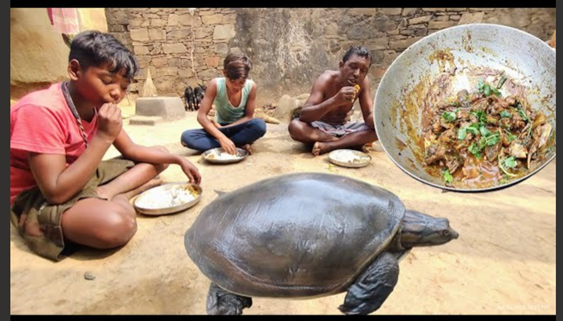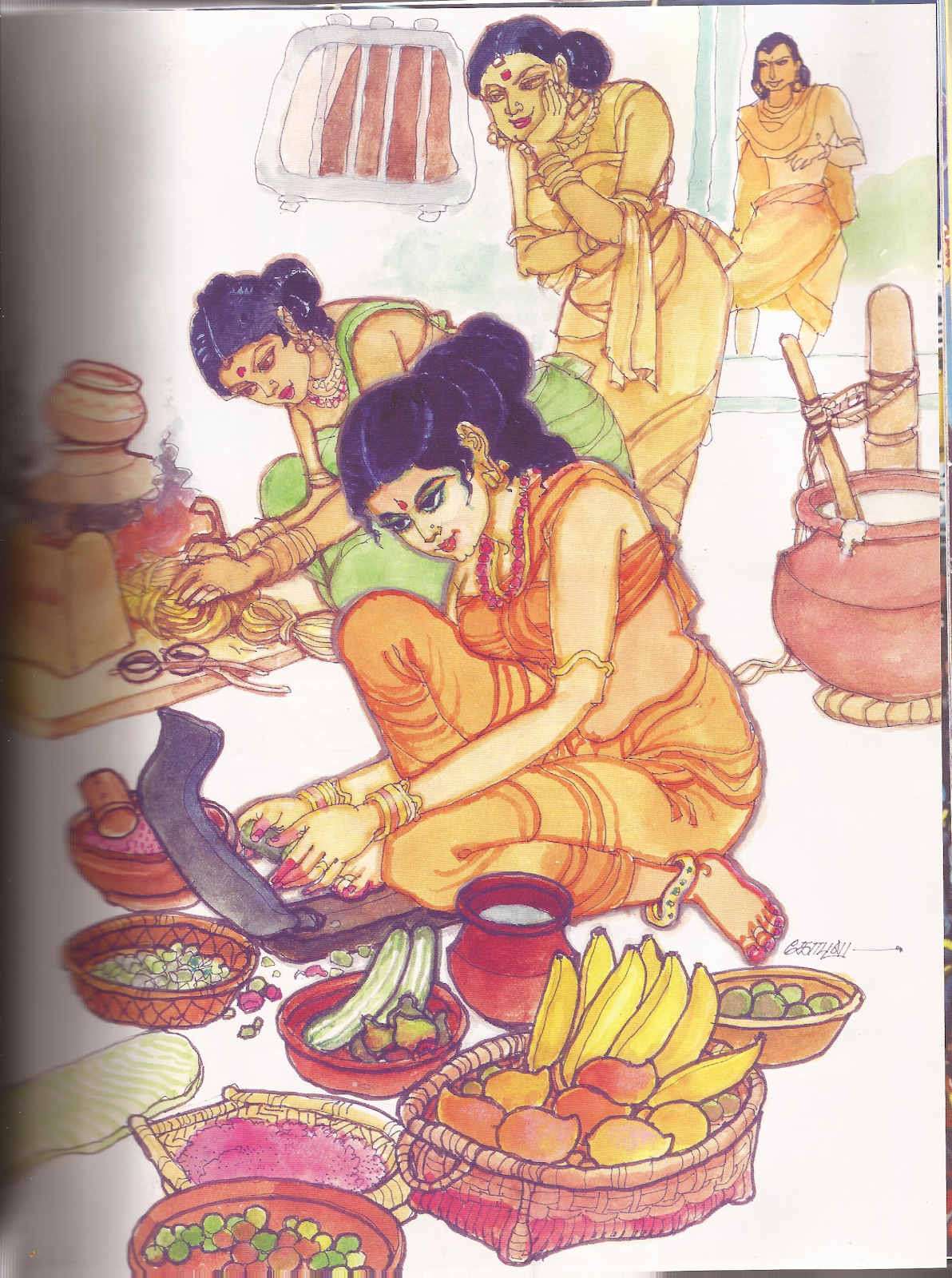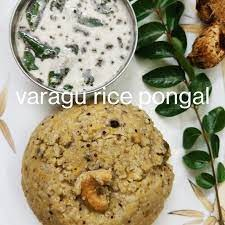"FOOD HABITS OF TAMILS"-PART30 /"இடைக்கால
தமிழரின் உணவு பழக்கங்கள் தொடர்கிறது" / "Food Habits Of
Medieval period Tamils continuing" [தமிழிலும் ஆங்கிலத்திலும் / In English
and Tamil]
கி.பி
ஏழாம் நூற்றாண்டுத் தொடக்கத்தில், தமிழ் நாட்டில் பக்தி இயக்கத்தை வளர்த்த சிவனடியார்களுள்
ஒருவருமான திரு நாவுக்கரசு நாயனார் என அழைக்கப்பட்ட அப்பர், தமது தேவாரத்தில் ஆமை உணவாக
உட்கொள்ளப் பட்டத்தை தெரிவித்துள்ளார். "வளைத்துநின் றைவர் கள்வர் வந்தெனை நடுக்கஞ்
செய்யத், தளைத்துவைத் துலையை யேற்றித் தழலெரி மடுத்த நீரில், திளைத்துநின் றாடு கின்ற
வாமைபோற் றெளிவி லாதேன், இளைத்துநின் றாடு கின்றே னென்செய்வான் றோன்றி னேனே."
ஐந்து
கள்வர் போன்ற ஐம்பொறிகள் இவ்வுடம்பில் என் உள்ளத்தைச் சுற்றி நின்று கொண்டு என்னை நடுங்கச்
செய்தலால், எங்கும் செல்லாதபடி பிணித்து வைத்துப் பாத்திரத்தில் நீரை நிரப்பி அப் பாத்திரத்தைத்
தீயினால் சூடாக்க, அந்நீரிலே பிணியை அவிழ்த்து நீந்த விட்ட அளவிலே மகிழ்வோடி நீந்தி
விளையாடிக் கொண்டு சூட்டில் வெந்து உயிர் நீங்க இருக்கும் அவலத்தைப் பற்றிச் சிந்திக்க
மாட்டாத ஆமையைப் போல உள்ளத் தெளிவு இல்லாதேனாய் வாழ்க்கையில் இளைத்து நின்று தடுமாறுகின்றேன்.
வேறு யாது செய்வதற்காகப் பிறப்பெடுத்தேன் நான் ? என கேட்டு முறையிடும் இந்த தேவாரத்தில்
ஆமையை நீரில் வேக வைப்பதை உதாரணமாக அவர் கையாளுவதன் மூலம் இந்த உணவு முறையையும் நாம்
அறிகிறோம்.
9
ஆம் நூற்றாண்டை சேர்ந்த, திருவாசகம் தந்த, மாணிக்கவாசகர் காலத்தில் நடந்த கதை ஒன்று
பரஞ்சோதிமுனிவர் அருளிச் செய்த திருவிளையாடற் புராணத்தில் வருகிறது. "பிட்டுக்கு
மண் சுமந்த பெருமான்" என்பது இந்த அறுபத்தி ஒன்றாவது திரு விளையாடல் ஆகும். இதன்
மூலம் பிட்டு அங்கு தமிழர்களின் உணவாக இருந்ததை அறிய முடிகிறது. அந்த மண் சுமந்த படலத்தில்
இருந்து ஒரு பாடல் உதாரணமாக கிழே தரப்படுகிறது.
"பிட்டிடுவே
னுனக்கென்றா ளதற்கிசைந்து பெரும்பசியாற், சுட்டிடநான் மிகமெலிந்தேன் சுவைப்பிட்டி லுதிர்ந்தவெலாம்,
இட்டிடுவா யதுமுந்தத் தின்றுநா னிளைப்பாறிக், கட்டிடுவே னின்னுடைய கரையென்றார் கரையில்லார்."
ஒரு முறை, வைகை ஆற்றில் வெள்ளம் கரை புரண்டு ஓடியது. இதையடுத்து ஆற்றின் கரையை அடைப்பதற்காக
வீட்டுக் கொருவர் மண் சுமந்து வர வேண்டு மென மன்னர் உத்தரவிட்டார். ஆனால், பிட்டு விற்று
பிழைப்பு நடத்திய சிவ பக்தையான வந்தி எனும் மூதாட்டிக்கு மண் சுமந்து வர யாருமில்லை.
ஆகவே, அங்கு வந்த கூலி இடம், "தனக்குப் பதில் நீ மண் சுமக்க வந்தால், பசி தீரச்
சுடச் சுட, உனக்குக் கூலியாகப் பிட்டுத் தருவே னென்று கூறினள்; எல்லையில்லாத இறைவர்
அதற்கு உடன் பட்டு,பெரிய பசித்தீ என்னைச் சுட அதனால் யான் மிக இளைத்தேன்; யான் வேலை
செய்தற்கு முன்னரே, சுவை மிக்க பிட்டில் உதிர்ந்த பிட்டு முழுதும், தருவாயாக; அதனைத்
தின்று நான் சிறிது இளைப்பாறிக் கொண்டு, நினது பங்குக் கரையைக் கட்டுவேனென்று கூறினர்."
என்கிறது இந்த பாடல்.
ஒன்பதாம்
அல்லது பத்தாம் நூற்றாண்டு ஔவையார், வேளூர் என்ற ஊரில் வாழ்ந்த பூதன் என்பவன் விரும்பி
அளித்த விருந்தை வியந்து பாடிய பாடல்
"வரகசிச்
சோறும், வழுதுணங்காய் வாட்டும்" ஆகும். சாதாரண வரகரிசிச் சோறு [வரகு அல்லது வரகரிசி
/ KodoMillet ]; கத்தரிக்காய்ப் பொரியல்; மிகவும் புளித்த மோர். இவ்வளவுதான் அந்த விருந்து! என்றாலும் இந்த விருந்துக்கு ஈடாக உலகம் முழுவதையும்
தந்தாலும் தகும் என்கிறார் ஔவையார்.
"வரகசிச்
சோறும், வழுதுணங்காய் வாட்டும், முரமுரெனவே புளித்த மோரும், - திரமுடனே, புல்வேளூர்ப் பூதன் புரிந்து விருந்து இட்ட சோறு,
எல்லா உலகும்பெறும்" இதன் மூலம் நாம் அங்கு வரகரிசிச் சோறு, கத்தரிக்காய்ப் பொரியல்,
புளித்த மோர் போன்றவை உணவாக இருந்ததை அறிகிறோம். மற்றும் ஒரு பாடலில், அவர் கீரைக்கறி
உணவை கூறுகிறார்.I
"வெய்யதாய்
நறுவிதாய் வேண்டளவும் தின்பதுவாய், நெய்தான் அளாவி நிறம்பசந்த – பொய்யா, அடகென்று சொல்லி
அமுதத்தை யிட்டாள், கடகம் செறிந்தகை யாள்" இங்கு, "என்ன இந்தப் பெண்கள் கீரைக்கறி
என்று சொல்லி, அமுதத்தை அல்லவா படைத்திருக்கிறார்கள்? இந்தக் குளிரில் வெப்பமுடையதாய்,
நல்ல மணமுடையதாய் நெய் நிறைய பெய்து, வேண்டு மட்டும் உண்டாலும் கெடுதியை உண்டாக்காததாய்
அமுதத்தை அளித்துள்ளார்களே!" என்று வியக்கிறார்.[அடகு = கீரை]
நன்றி
[கந்தையா தில்லைவிநாயகலிங்கம்,
அத்தியடி, யாழ்ப்பாணம்]
👉அடுத்த பகுதியை வாசிக்க அழுத்துக
Theebam.com: "தமிழரின் உணவு பழக்கங்கள்"-பகுதி: 31
👉ஆரம்பத்திலிருந்து வாசிக்க அழுத்துக
Theebam.com: "தமிழரின் உணவு பழக்கங்கள்"பகுதி: 01:
பகுதி : 31 தொடரும்
"FOOD
HABITS OF TAMILS" PART: 30
"Food
Habits Of Medieval period Tamils continuing"
7th
century Appar refers to eating tortoise in his devotional songs, thevaram. The
tortoise ["Amai"] is put in a big vessel of water. It feels a bit
cold. When people start to cook it, ironically the tortoise feels happy because
the water gets to be warm and cozy, It swim and dance in water. It does not
realize the oncoming disaster! When the water reaches a certain degree of heat,
that tortoise sudden feel the pain and before it could realize that it is in
danger, it will suddenly die as water will begin to boil in few seconds gap.
"The
five organs of sense which are like robbers. remaining surrounding me. draw
near me and make me tremble. trying the feet. setting a pot of water on the
fire for cooking rice. in the water which was heated by burning fire. I who
have no clarity like the tortoise which bathes in the water without ceasing. I
am enjoying this life, being exhausted."
The
9th - century Thiruvilayadal Puranam talks at length about the adventures of
Lord Shiva, One among the three gods of the Hindu pantheon. In one of the
stories, as a Sixty - first Thiruvilayadal, Lord Shiva, in order to help a poor
woman, a puttu (pudding) seller by profession, takes the form of a sand -
bearer when a dam is being built under instructions from the king that every
citizen, regardless of sex, be pressed into action. From this story we came to
know that food Pittu or puttu was one of the popular food during Medieval
period. One of the poem, from this Thiruvilayadal puranam, which mentioning
food pittu, is given below. This pittu poem mentioned recently in Sri Lanka
parliament session too.
"பிட்டிடுவே
னுனக்கென்றா ளதற்கிசைந்து பெரும்பசியாற், சுட்டிடநான் மிகமெலிந்தேன் சுவைப்பிட்டி லுதிர்ந்தவெலாம்,
இட்டிடுவா யதுமுந்தத் தின்றுநா னிளைப்பாறிக், கட்டிடுவே னின்னுடைய கரையென்றார் கரையில்லார்."
[From Sixty-first Tiruvilliadel] An old lady Vanthi, being a poor lady said
that she will give him "Pittu" instead of money if he is ready to
throw mud into bank of Vaigai river to stop flood. He, God Siva as a labourer
[cooly] accepted and the agreement is, she need not give him the 'Pittu' which
is in good shape, but only the Pittu which break & falls off from the main
portion of Pittu. The old lady agreed. He, god Siva promised that after ate
what ever falls off, He will carry mud in his head and throw it into the waters
of Vaigai river to build embankment.
The
great poet of ancient times, Avvaiyar wrote about the use of millets
["varaku" rice] and
"brinjal curry" during the chola age itself. Millets were a
staple food for Tamilians and was eaten everyday. Here is the story about
varagu / kodo millet written by Avvaiyar. She writes, A person named Velur
Boodhan gave food with much love to the very hungry Avvaiyar. He had made and
served Varagu Rice and Brinjal stir fry. Along with that he also served a foamy
frothy fermented butter milk. The food was so good and so worthy, that in
return, it would be fair to give the whole world to him as per the ninth or
tenth century, Avvaiyar. "வரகசிச் சோறும், வழுதுணங்காய் வாட்டும், ...
"
In
another poem Avvaiyar mentioned about the curry made out of spinach. "வெய்யதாய்
நறுவிதாய் வேண்டளவும் தின்பதுவாய், நெய்தான் அளாவி நிறம்பசந்த – பொய்யா, அடகென்று சொல்லி
அமுதத்தை யிட்டாள், கடகம் செறிந்தகை யாள்" Here Avvai praise the little
girl, who gave food to her as "Oh! It is truly a dish from heavens, and
not the spinach [keerai / அடகு = கீரை] that she claims"
Thanks
[Kandiah Thillaivinayagalingam,Athiady, Jaffna]
PART : 31 WILL FOLLOW















0 comments:
Post a Comment